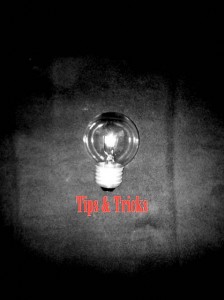The 20-year-old Thank You
/ This week, I sent a thank you note that I should have written 20+ years ago.
This week, I sent a thank you note that I should have written 20+ years ago.
When I was applying to colleges, I asked one of my English teachers for a letter of recommendation. He wrote it, I'm certain I at least said "Thank you" when he handed it to me, and I included it in my applications.
A few months later, I blew out of that suburb and didn't look back.
Now...fast-forward a couple of decades. Picture me in my sweats, sitting on the living room floor surrounded by dusty boxes from the attic. I pulled out a file and found the original letter of recommendation from my English teacher.
It was quite a letter -- one tight-margined page filled with praise for me as a student and as a person. It was clear as I read it that Mr. Lewis hadn't relied on boilerplate recommendation language, replacing another student's name with mine. He'd put thought and effort into that letter. And I am sure I was one of dozens of kids who had asked for his recommendation.
As I read the letter, I knew I hadn't fully appreciated what he'd done for me back when I was in high school, and my verbal "thank you" felt entirely inadequate.
I wanted to thank him properly. But what were the chances he'd remember me out of thousands of kids he's taught over the years? What difference would a heartfelt thank you note mean now?
I decided it didn't matter if he remembered me or not. (To be perfectly honest, I probably wouldn't be able to pick him out of a line-up either!) I knew from years of working with nonprofits that sending a thank you is always the right thing to do.
So I did it. And he responded with a kind note of his own. I don't think he does remember me, but that doesn't matter.
The important thing to me is that I was able to acknowledge his generosity.
Now, clearly, I should have written that note many years ago. I blew it then...just like so many nonprofits blow it each and every day when they fail to acknowledge their donors' generosity.
But it really is better late than never. So if you are still sitting on a stack of thank you notes from your year-end giving drive, for pete's sake, send them out! Better yet, take a few minutes out of each day to telephone those donors and thank them profusely for their support.
They don't have to give to you. They don't owe you anything, just like Mr. Lewis didn't owe me such a stellar recommendation letter.
But you do owe them something: a sincere and timely thank you.

















